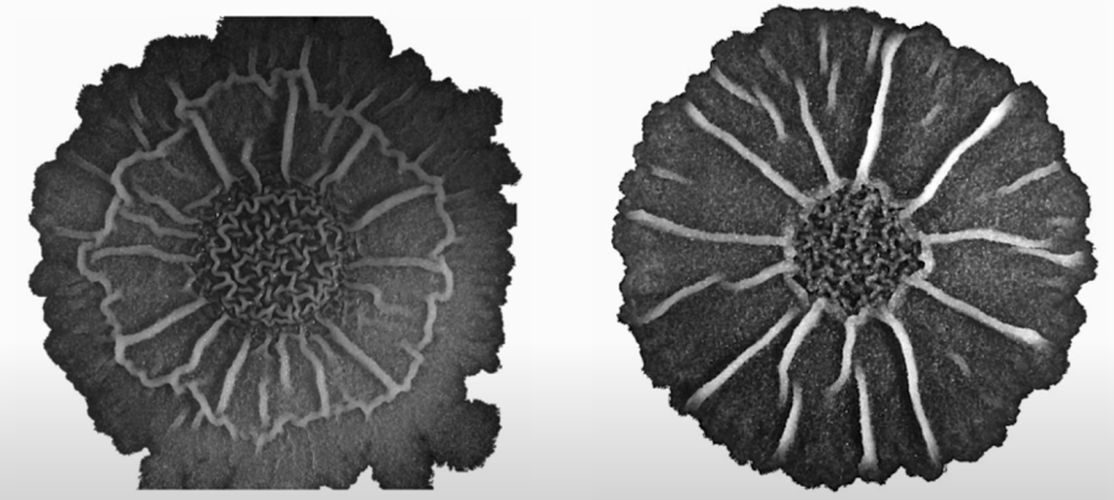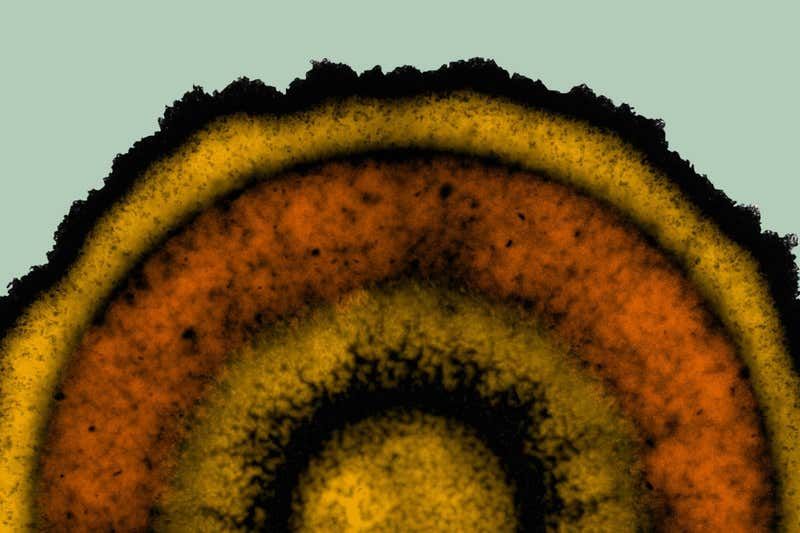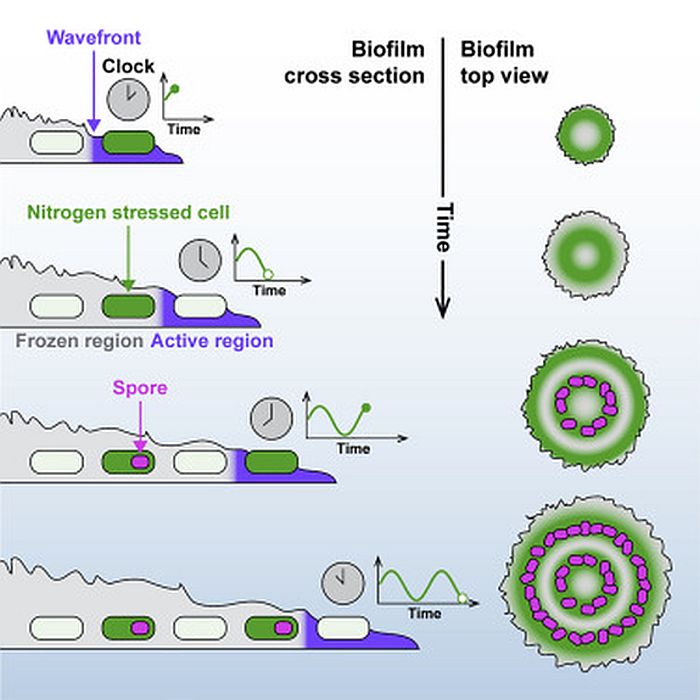
Structural organisation has always been the hallmark of complex organisms, this however is not the case anymore. Researchers at University of California, San Diego have discovered that bacterial biofilms are not at all simple but is a complex community, which has a direct relationship with its external settings.
Biofilms or colony of microorganisms – bacteria and fungi – were believed to be fundamentally simple, that is, devoid of any structural organisation. Unlike multicellular organisms including plants and animals where individual cells morph into various forms to give out complex and varied biological structures.
Gürol Süel and his colleagues discovered that bacterial biofilms forms disk like structures at peripheral level as they grow and consume nutrients from environment. In absence of external nutrients, the cells automatically freeze itself to conserve energy, a phenomenon commonly seen in animals and plants.
Selective sporulation
For the experiment, the team made use of Bacillus subtilis biofilm and starved it of vital nitrogen. To counter the starve situation, the bacteria developed spores around it. The thick wall is able to resist high temperatures, humidity and other unfavourable environmental conditions. The strategy is termed as sporulation.
Interestingly, not all cells in the biofilm gave rise to spores rather only some cells develop the roughly circular biofilm. Researchers concluded that entire globus of biofilm acted as one unit and hence, stress-mitigating genes in the biofilm allowed for some cells to adapt and not all.

Mathematical modelling and genetic probing of the substrate’s neural circuit indicated that the structure is following “clock and wavefront” mechanism.
This suggested that the entire biofilm of bacteria has no random arrangement but it is an organised structure. The selective behaviour during sporulation is quite similar to what vertebrates and plants perform during development. Hence, there must be some corelation here, added Süel.
Understanding the underlying circuit of biofilms
From the perspective of evolutionary cell biology, it would be interesting to note and understand the true definition of multicellular organism, said Tanmay Bharat at the University of Oxford.
There are a number of pros and cons of biofilms. For instance, they are responsible for galvanic corrosion and clinical infections. But biofilms are employed in water filtration to prevent corrosion.
Once we are able to understand the actual underlying circuit of biofilms, it would open up new doors where they are used and mitigated, envisioned the researchers.

Takeaway
The motif of survival is not only seen in complex beings but even in bacteria this theme is predominant. In an effort to increase its chances of survival, the biofilm showed how it diversified its resilient cells.
We have always segmented organisms on the basis of unicellular and multi-cellular structures, where unicellular means simple organisms with basic functions and multi-cellular with complex structures and functions. However, with the current research, we need to revise our definition and differentiation between simple, unicellular organisms and complex, multicellular ones.
Via: New Scientist



